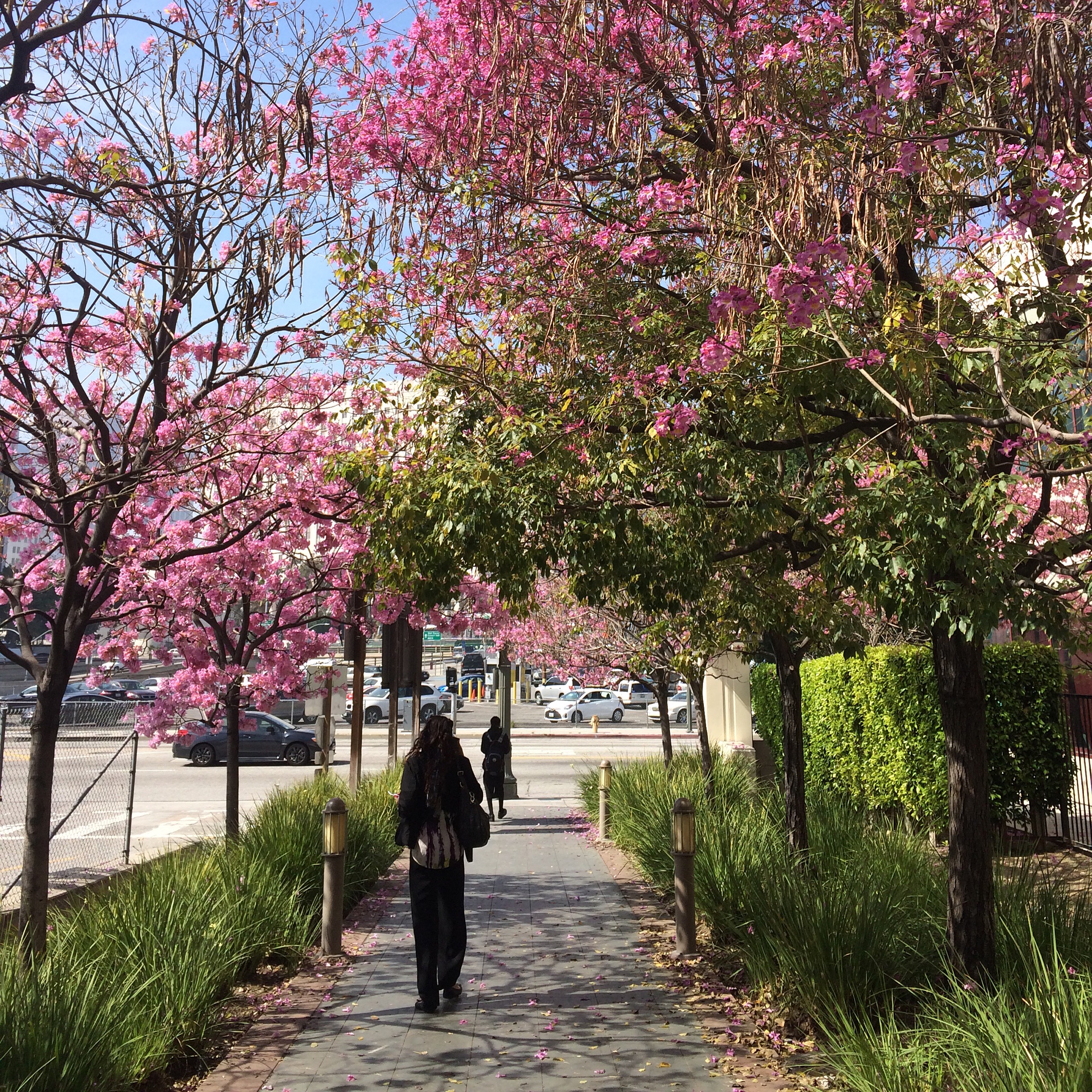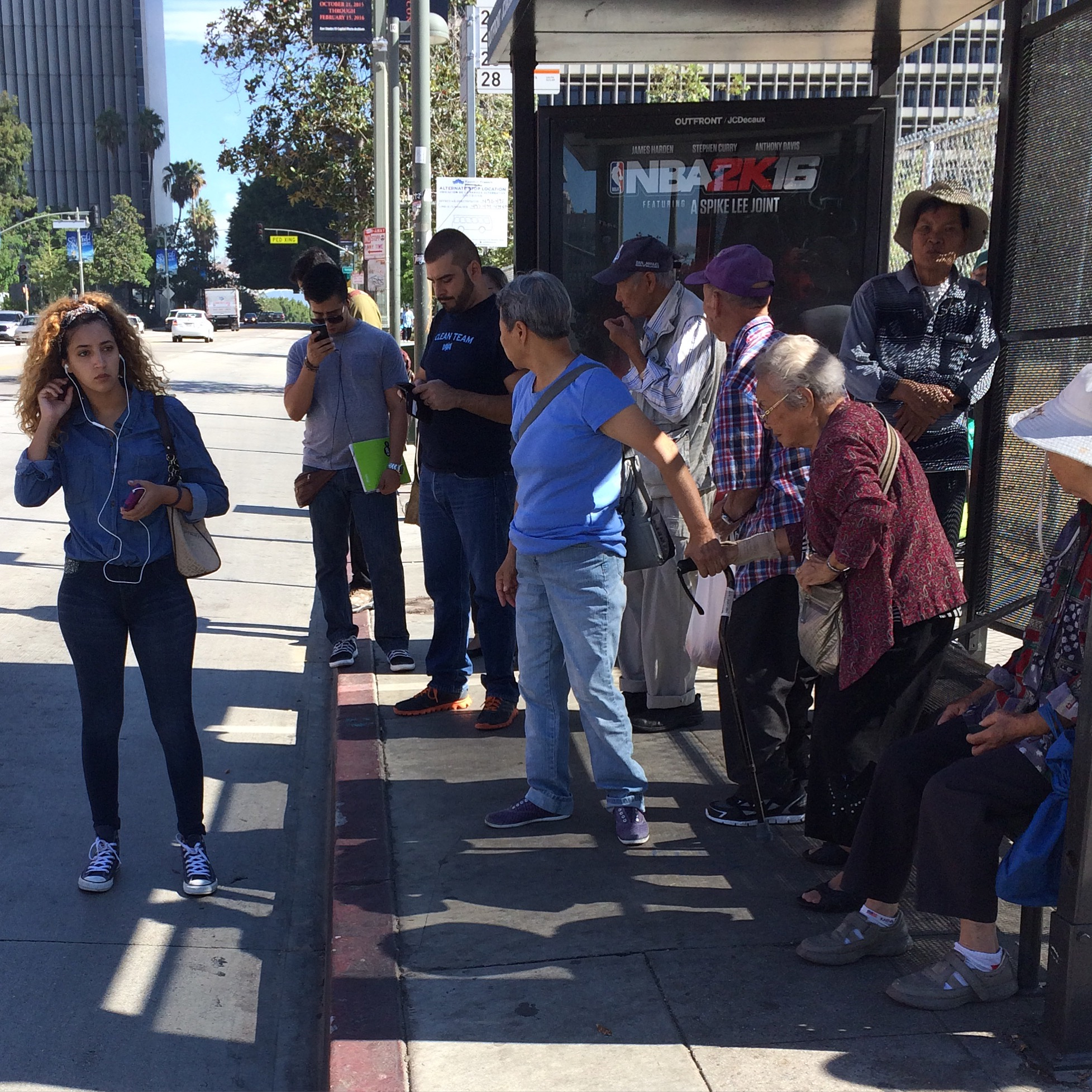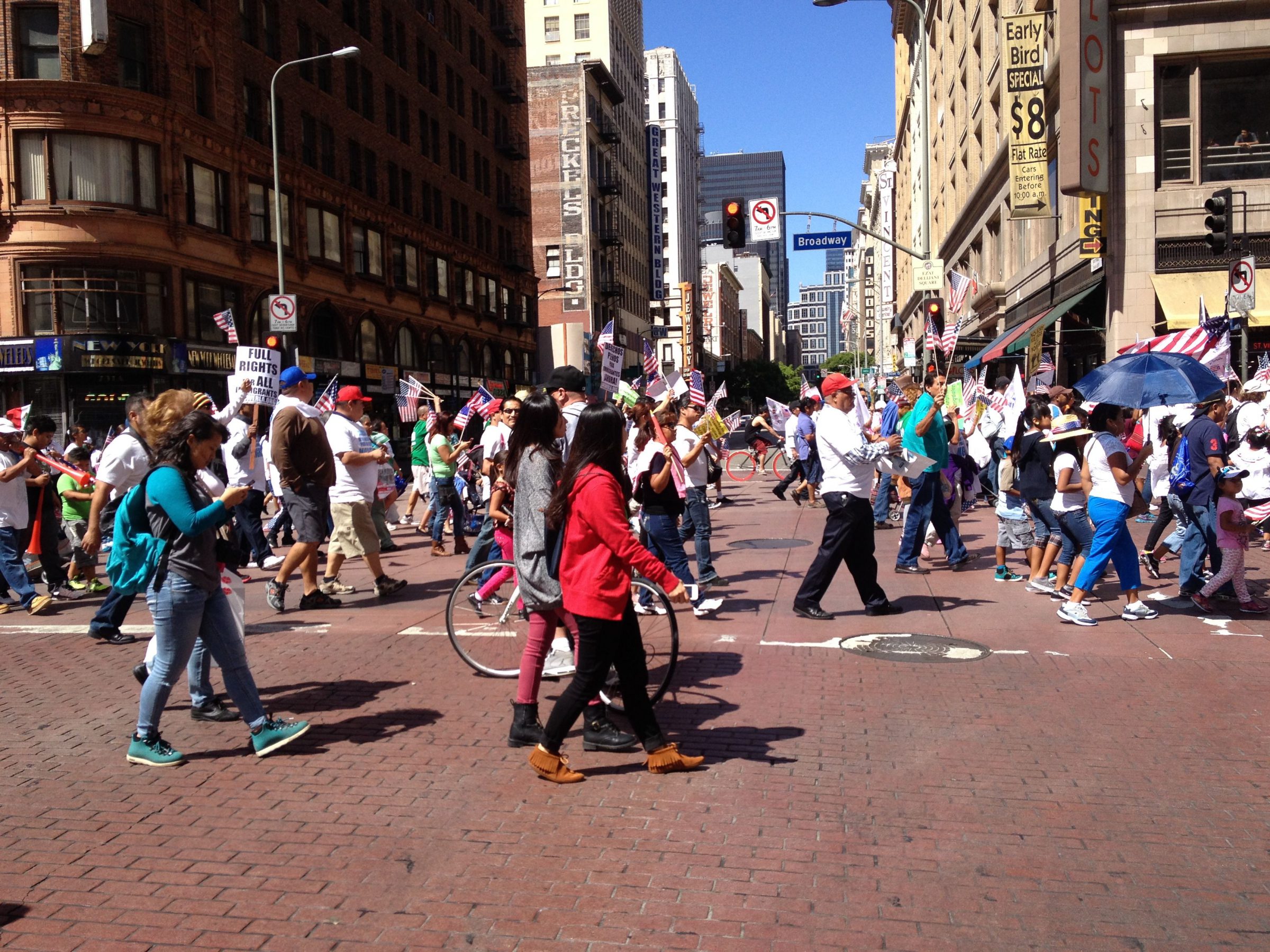Two years ago, over 60 #metrofundwalkbike advocates attended a Metro Planning & Programming Committee meeting on the Short Range Transportation Plan, setting off a series of actions and incremental victories for walking and biking in Los Angeles County.
Last month, our efforts culminated in a ballot measure expenditure plan that would spend over $4 billion* (2015 dollars) on walking, biking, and connecting our residents to transit stations and bus stops over the next 40 years. Dubbed the Los Angeles County Traffic Improvement Plan, Metro’s measure will go before voters in November and needs two-thirds support to pass.
“We don’t demand perfection. We demand progress.” @mridleythomas on #Metroplan pic.twitter.com/EMxvY8564y
— Investing in Place (@InvestinPlace) June 23, 2016
In the last few months, our coverage focused on the changes we were pushing for and we scored some significant wins in the revised plan while defending all the great projects that were included in the March draft. Now that the dust has settled after the final plan’s adoption, it is clear that the ballot measure is a huge leap forward for walking and biking in Los Angeles County and includes funding to make our communities safer, healthier, and more equitable.
Metro committee takes big step to move #MetroFundWalkBike forward! See you at full Metro board 5/26 pic.twitter.com/wtwcMXV19V
— Investing in Place (@InvestinPlace) May 18, 2016
That doesn’t mean our work is done — far from it. We still need to better define what we mean by transportation equity, to focus on parts of the county that are falling behind like the Gateway Cities, and to grow the voices of local champions on these issues.
While our work continues, it is important to recognize that all of our future victories will be easier in an environment where there is robust funding for transit, streets, and the rest of our transportation system. The November ballot measure — Measure M — is a critical piece of that equation. As Metro and the campaign start to educate voters about the measure, here’s a recap of what Measure M would do for walking and biking:
1. Integrate First and Last Mile Access to Transit into All Projects
With the recent opening of rail lines in the San Gabriel Valley and the Westside, there’s been a lot of coverage about whether people can easily access the new lines. Up until now, people walking and biking to transit have been an afterthought in transit planning, but those days are over — Metro’s recent Quality of Life report found that a vast majority of transit users get to the train station or bus stop without a car.
#metrofundwalkbike @TRUSTSouthLA1 calling need for walking and biking in low income communities along Slauson Ave pic.twitter.com/o34nqRdyXN
— Investing in Place (@InvestinPlace) May 18, 2016
One of the most significant revisions in the final expenditure plan was the addition of an innovative policy to fund first and last mile improvements near new transit stations. The policy would require cities to contribute three percent of the cost of new transit projects and allow them to use that money to make improvements for walking and biking in the vicinity of the new stations. We called the Active Transportation Strategic Plan a “game changer” because it helps build an integrated transportation system that truly connects neighborhoods to transit. Our initial estimate values these improvements at about $300-500 million over the life of the measure.
2. Finish Los Angeles River and San Gabriel Valley Greenways
Los Angeles County has an extensive network of greenways along our rivers, railroad rights-of-way, and other corridors. These paths provide important links to schools, parks, and other community destinations.
For some long-distance bike commuters, the paths provide efficient, traffic-free routes to transit stations and regional job centers. But this network is incomplete, with missing links that prevent people from fully utilizing the system. Many of these missing links are in park-poor communities without safe places for children and families to be physically active.
Measure M includes funding to close the gap in the Los Angeles River bike path through Downtown Los Angeles and open to the public some of the tributaries to the San Gabriel River that are currently behind locked gates. The result will be a connected bike path network for preschoolers with training wheels, people who love riding for miles on end, and everyone in between who would be able to use high-quality bike paths to meet their friends and family, to get to work or school, and more. The measure allocates over $650 million for these projects.
3. Fund Safe Routes to School and Other Active Transportation Programs and Projects
Each subregion had the opportunity to set aside funding for walking, biking, and safe routes to school, depending on local priorities. (For more about Los Angeles County’s nine subregions, see our memo on Councils of Governments.) Nearly all subregions did. These programs vary in name, description, and funding levels, but they all set aside funding for future active transportation needs. Eligible uses would include infrastructure like sidewalks, crosswalks, and bike lanes, and programs like safe routes to school, public education campaigns, and open streets events.
Reps from Gateway Cities and South Bay COG talk about getting equitable investments in their disadvantaged comms. pic.twitter.com/hKifOvyVcW
— Investing in Place (@InvestinPlace) June 23, 2016
Funding and investments will be controlled by the subregion, so it is important for advocates to get involved in setting the priorities, including which specific projects and programs should be funded in each part of the county.
Here’s how much each subregion set aside for walking, biking, safe routes to school, and complete streets programs:

4. Require Complete Streets in All Projects
All projects in the ballot measure are governed by Metro’s Complete Streets Policy, which requires projects to incorporate the needs of people walking, biking, and taking transit. While we had asked for this policy to be included directly in the ballot measure ordinance, the fact is that complete streets is already required and has been since 2014. Metro staff is still working on updating planning procedures to ensure that all projects comply with the policy, and advocates will need to keep a watchful eye on projects to make sure that they do, but voters should feel comfortable that even the highway projects included in the measure will make accommodations for people walking, biking, and taking transit.
5. Repair Streets and Sidewalks
Fixing streets and sidewalks is the responsibility of local jurisdictions, but many cities haven’t had enough funding to keep their sidewalks in good condition and make them accessible for people with disabilities.
LA County voters overwhelmingly support using #Metroplan revenue to fix sidewalks #LASidewalks #MetroFundWalkBike pic.twitter.com/1127aIYmec
— Investing in Place (@InvestinPlace) June 8, 2016
Metro’s final expenditure plan increased local return up to 20 percent with the expectation that cities will use this funding to make infrastructure improvements. To make sure voters understand this commitment (and at our urging), Metro included sidewalk repair right alongside fixing potholes in the 75-word ballot summary that voters will see:
Humbled to see @metrolosangeles #Metroplan ordinance include sidewalks in 75 word summary. See the clever tradeoff pic.twitter.com/x2YzWsx5XR
— Investing in Place (@InvestinPlace) June 23, 2016
Sidewalks are an essential part of the transportation system, so it is critical for cities to have the resources to maintain them.
6. Fund Countywide Walking and Biking Programs
In addition to all of the funding described above, Metro has reserved $857.5 million — about $20 million per year — for programs and projects that serve the whole county. This would provide a stable funding source for ongoing program costs currently subject to the uncertainty of grant funding, like safe routes to school, bike safety classes, public education campaigns, open streets, and bike share. Stable funding is essential for these programs to grow and reach the maximum number of residents possible. This funding might also be used for capital projects with countywide significance, or maintenance and operation of active transportation infrastructure.
And So Much More…
These walking and biking programs are just one piece of what the measure would do. It also includes dedicated funding for transit maintenance in perpetuity, yet-to-be-identified bus rapid transit projects, expanded bus and rail operations, and enhanced service for students, seniors, and people with disabilities. This all adds up to a remarkably balanced, forward-looking plan that makes significant investments in our communities. The measure is a strong foundation for us to build on to create truly safe, healthy, and equitable communities and we are pleased to support it.
To learn more about our work on defining transportation equity in Los Angeles County, please register to join us at The California Endowment for a partner’s convening on September 12.
*The sum of all projects and programs included in the expenditure plan with a primary purpose of enhancing walking and biking (“active transportation”) is $3.9 billion. Some of these programs also include other related purposes that might not be exclusively for walking and biking, such as complete streets and first/last mile improvements. This $3.9 billion estimate does not include the potential value of Metro’s new first/last mile policy that integrates walking and biking improvements near new transit stations into the transit project budget, which could add another $300-500 million for walking and biking. All estimates are in 2015 dollars.











You must be logged in to post a comment.